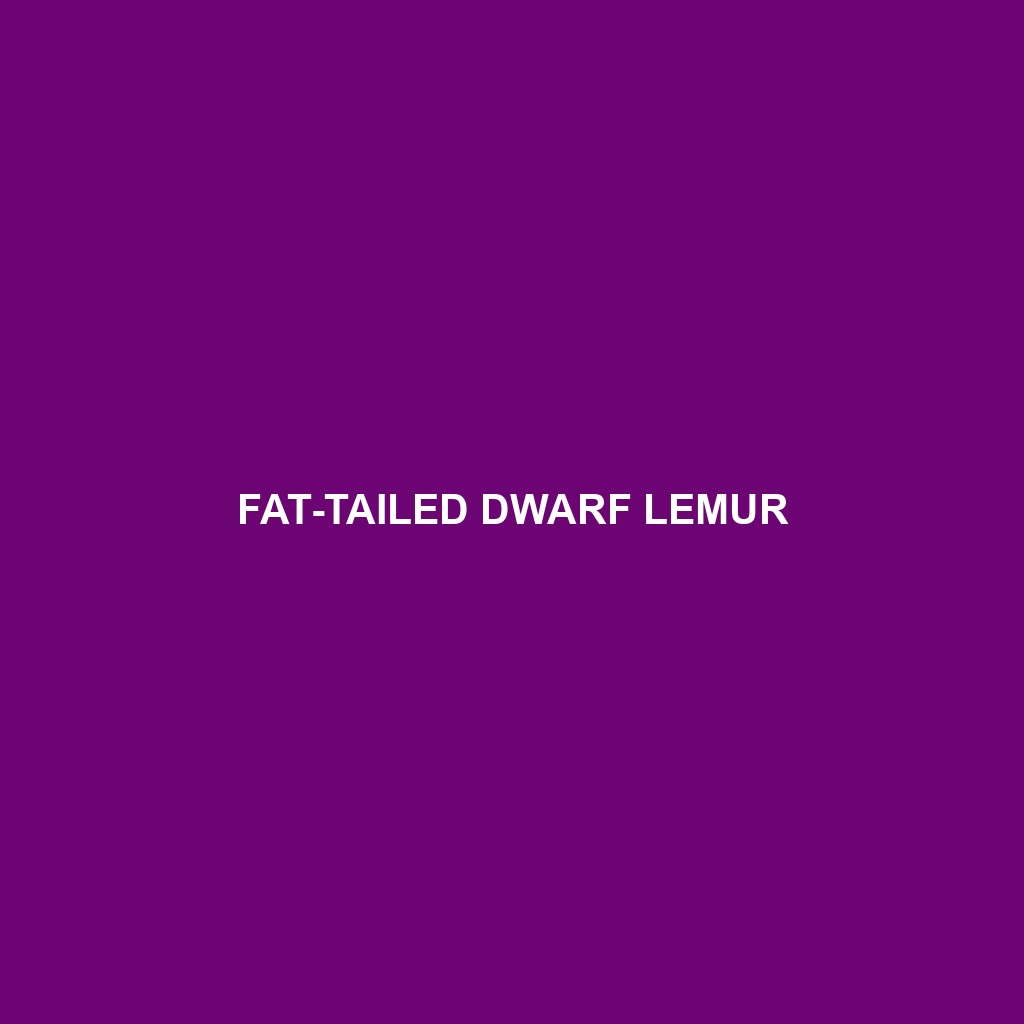Fat-tailed Dwarf Lemur
Common Name: Fat-tailed Dwarf Lemur
Scientific Name: Cheirogaleus medius
Habitat
The Fat-tailed Dwarf Lemur is primarily found in the rainforests and dry deciduous forests of Madagascar. This region is characterized by its rich biodiversity and unique ecosystems, which provide the necessary climate and resources for its survival. The lemurs thrive in the humid, warm conditions of the eastern rainforests and can also be located in the more arid southwestern parts of the island.
Physical Characteristics
Adult Fat-tailed Dwarf Lemurs typically measure between 23 to 30 centimeters in length, with tails that are almost as long as their bodies. They weigh approximately 0.5 to 1.5 kilograms. Their fur is soft and dense, displaying a mixture of gray and brown hues with distinct darker markings on the face and a lighter underside. One of their most distinctive features is their fat-storing tail, which appears thick and is crucial for their survival during lean periods.
Behavior
These lemurs are primarily nocturnal and exhibit a range of unique behaviors. They are known for their arboreal lifestyle, spending most of their time in trees. Fat-tailed Dwarf Lemurs are social animals that live in small family groups. During the day, they often engage in grooming and resting, while at night, they actively forage for food. Their vocalizations, ranging from soft chirps to louder calls, are essential for communication within their group.
Diet
The diet of the Fat-tailed Dwarf Lemur is primarily composed of fruits, flowers, and nectar. During the fruiting season, they feed on various fruits, including figs, which are abundant in their habitats. They are also known to consume insects and sap. This diet allows them to access a rich variety of nutrients necessary for their energy needs, especially in preparation for the periods when food is less plentiful.
Reproduction
The breeding season for the Fat-tailed Dwarf Lemur typically occurs between September and December. After a gestation period of about 60 to 70 days, females give birth to one or two offspring, which they nurse for several months. Parental care is primarily provided by the mother, although other group members often assist in the protection and rearing of the young.
Conservation Status
The Fat-tailed Dwarf Lemur is currently classified as Endangered according to the IUCN Red List. Habitat destruction due to deforestation and human encroachment poses significant threats to their survival. Conservation efforts are critical to ensure the preservation of their natural habitats and the species as a whole.
Interesting Facts
One fascinating aspect of the Fat-tailed Dwarf Lemur is its ability to store fat in its tail, which acts as a crucial energy reserve, especially during the long dry seasons. They are one of the few lemur species that exhibit true hibernation-like behavior, slowing down their metabolic rate in response to food scarcity.
Role in Ecosystem
The Fat-tailed Dwarf Lemur plays a vital role in its ecosystem as a seed disperser. By feeding on fruits and then excreting the seeds, they contribute to forest regeneration and the health of their habitat. Their interactions with other species, including pollination of certain plants, further underscore their significance in maintaining ecological balance.
